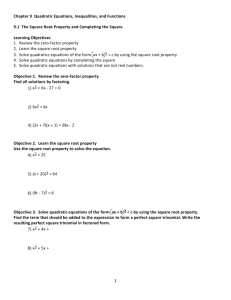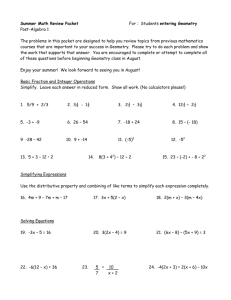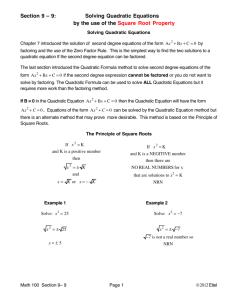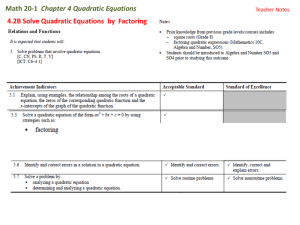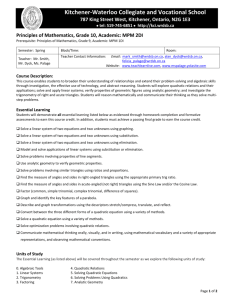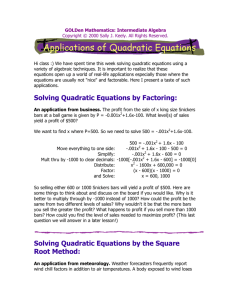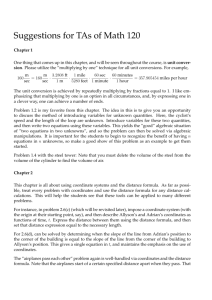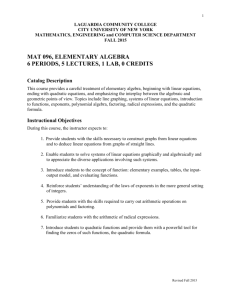1.5C Review of Square Root Principle
advertisement
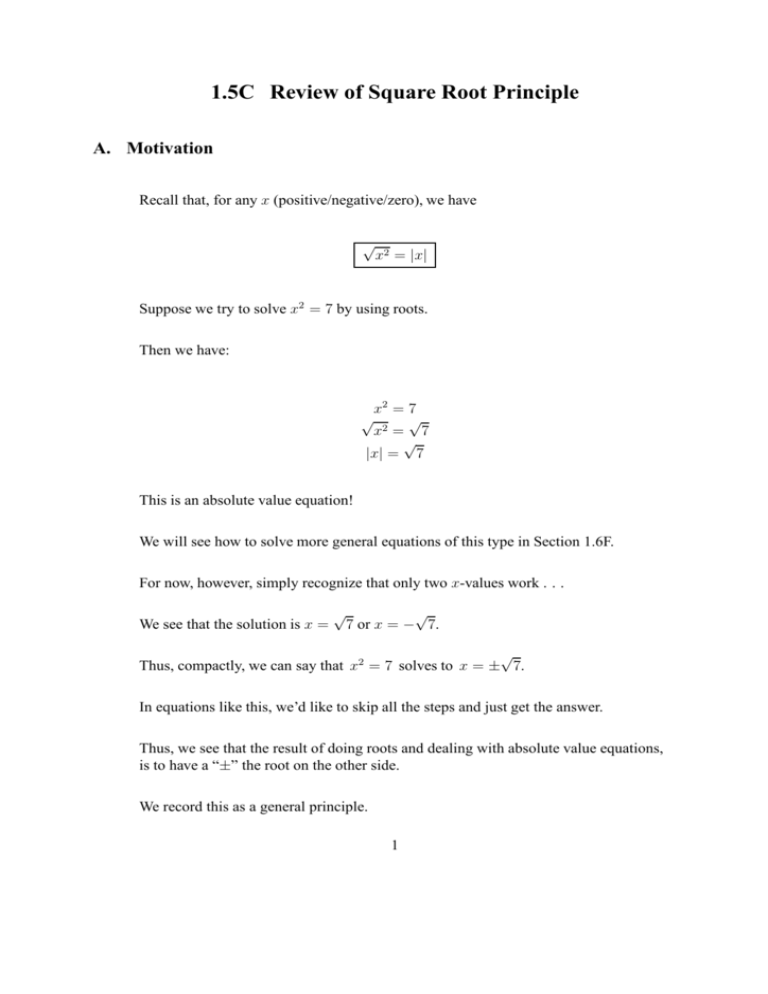
1.5C Review of Square Root Principle
A. Motivation
Recall that, for any 𝑥 (positive/negative/zero), we have
√
𝑥2 = ∣𝑥∣
Suppose we try to solve 𝑥2 = 7 by using roots.
Then we have:
𝑥2 = 7
√
𝑥2 = 7
√
∣𝑥∣ = 7
√
This is an absolute value equation!
We will see how to solve more general equations of this type in Section 1.6F.
For now, however, simply recognize that only two 𝑥-values work . . .
We see that the solution is 𝑥 =
√
√
7 or 𝑥 = − 7.
√
Thus, compactly, we can say that 𝑥2 = 7 solves to 𝑥 = ± 7.
In equations like this, we’d like to skip all the steps and just get the answer.
Thus, we see that the result of doing roots and dealing with absolute value equations,
is to have a “±” the root on the other side.
We record this as a general principle.
1
B. Square Root Principle
1. Square Root Principle
√
𝑢2 = 𝑎 has two solutions: 𝑢 = ± 𝑎
[i.e. 𝑢 =
√
√
𝑎 or 𝑢 = − 𝑎]
Recall: the “±” comes from the missing steps involving an absolute value
√
2. In any expression, (junk)2 = 𝑎, we can write junk = ± 𝑎.
C. Examples
Example 1:
Solve (2 − 4𝑥)2 = 5 for 𝑥
Solution
Apply the square root principle:
√
2 − 4𝑥 = ± 5
Thus we have:
−4𝑥 = −2 ±
√
√
−2 ± 5
5 =⇒ 𝑥 =
−4
Simplify by multiplying top and bottom by −1:
−(−2 ±
𝑥=
4
Ans
{
√
5)
√
2∓ 5
=
4
√ }
√
2− 5 2+ 5
,
4
4
2
Example 2:
Solve (3 − 𝑥)2 = 49 for 𝑥
Solution
Apply the square root principle:
√
3 − 𝑥 = ± 49 = ±7
Thus we have:
−𝑥 = −3 ± 7 =⇒ 𝑥 =
−3 ± 7
−1
Multiply top and bottom by −1:
𝑥=
−1(−3 ± 7)
=3∓7
1
Now 𝑥 = 3 − 7 or
Ans
𝑥 = 3 + 7,
so
{−4, 10}
D. Comments
1. The square root principle gives us another way to solve quadratic equations. Instead
of moving everything to one side and factoring, we can solve the quadratic equation by
writing it as
(junk)2 = 𝑎
2. Goal: Learn how to write a quadratic expression
𝑎𝑥2 + 𝑏𝑥 + 𝑐
as
𝑎(junk)2 + 𝑑
to use the square root principle on quadratic equations.
3





